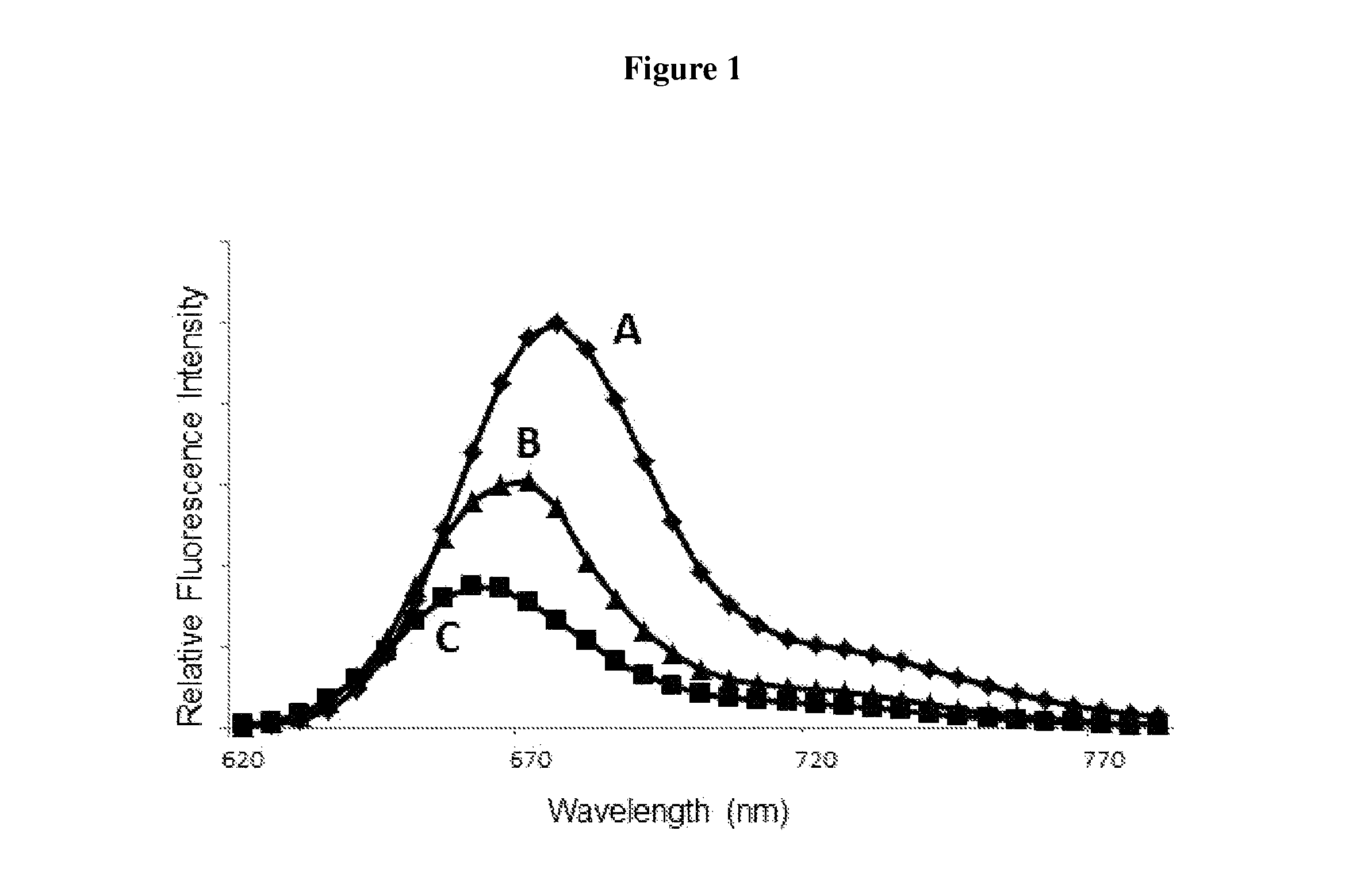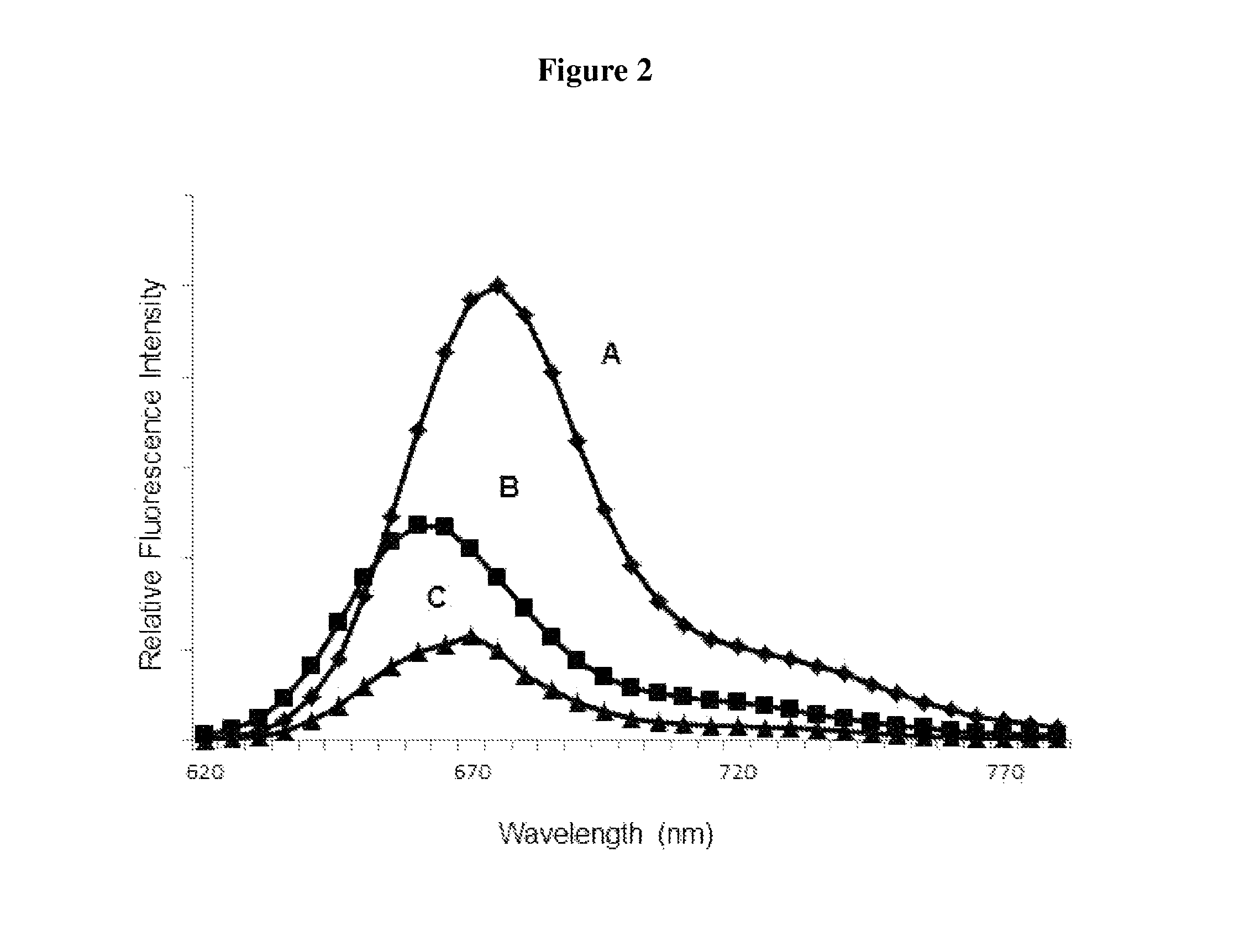Luminescent dyes with a water-soluble intramolecular bridge and their biological conjugates
a technology of intramolecular bridge and fluorescent dye, which is applied in the field of fluorescent dyes, can solve the problems of affecting the sensitivity of assays, and affecting the accuracy of determination, so as to achieve enhanced luminescence intensity and greater assay sensitivity
- Summary
- Abstract
- Description
- Claims
- Application Information
AI Technical Summary
Benefits of technology
Problems solved by technology
Method used
Image
Examples
example 1
Preparation of Compound 1
[0134]
[0135]To a solution of FMOC-cysteic acid triethylamine salt (6 g in 25 mL DMSO) is added O—(N-succinimidyl)-N,N,N′,N′-tetramethyluronium tetrafluoroborate (4 g), followed by the addition of triethylamine (1.4 mL). The mixture is stirred at room temperature for 1 h. The solution is poured into EtOAc (250 mL). The solid is centrifuged and washed with EtOAc (5×50 mL), ether (3×50 mL) and dried under vacuum to give Compound 1.
example 2
Preparation of Compound 2
[0136]
[0137]To a solution of Compound 1 (6 g in 15 mL DMSO) is added cysteic acid triethylamine salt (3 g in 10 mL DMSO) at room temperature. The mixture is stirred at room temperature for 12 h. The solution is poured into EtOAc (250 mL). The solid is centrifuged and washed with EtOAc (5×50 mL), ether (3×50 mL) and dried under vacuum to give crude Compound 2. The crude solid is further purified by preparative HPLC to yield the pure Compound 2 using 0.1% TFA in water-0.1% TFA in MeCN buffer system.
example 3
Preparation of Compound 3
[0138]
[0139]Compound 3 is analogously prepared from the reaction of Compound 2 with O—(N-succinimidyl)-N,N,N′,N′-tetramethyluronium tetrafluoroborate according to the procedure of Compound 1.
PUM
| Property | Measurement | Unit |
|---|---|---|
| molecular weight | aaaaa | aaaaa |
| infrared wavelengths | aaaaa | aaaaa |
| infrared wavelengths | aaaaa | aaaaa |
Abstract
Description
Claims
Application Information
 Login to View More
Login to View More - R&D
- Intellectual Property
- Life Sciences
- Materials
- Tech Scout
- Unparalleled Data Quality
- Higher Quality Content
- 60% Fewer Hallucinations
Browse by: Latest US Patents, China's latest patents, Technical Efficacy Thesaurus, Application Domain, Technology Topic, Popular Technical Reports.
© 2025 PatSnap. All rights reserved.Legal|Privacy policy|Modern Slavery Act Transparency Statement|Sitemap|About US| Contact US: help@patsnap.com



